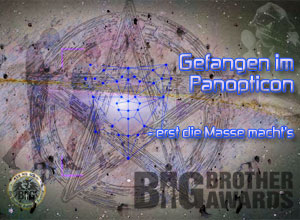

|
search / subscribe / upload / contact |
|
|
||
|
|
||
|
|
||
|
|
||
|
|
||
|
|
||
|
|
||
|
|
||
| RSS-Feed Depeschen | ||

|
||
Date: 1998-12-15
Trickle Down: Spaete Lehren aus dem Golfkrieg-.-. --.- -.-. --.- -.-. --.- -.-. --.- -.-. --.- -.-. --.- Trickle Down: Späte Lehren aus dem Golfkrieg Nun melden sie sich wieder zu Wort, die Erfinder des Internet, die 1968 vier dicke Rechner zur effizienteren Berechnung der Ballistik von Interkontinentalraketen vernetzt hatten. Heutzutag bietet die von der ARPA zu DARPA gewandelte Pentagon/division der zivilen Welt das Knowhow an, mit verstopften Netzwerken effizient fertigzuwerden, als spätes Trickle Down der Erfahrungen mit dem Datenwahnsinn des Golfkriegs. -.-. --.- -.-. --.- -.-. --.- -.-. --.- -.-. --.- -.-. --.- Matthew Nelson & Stephen Lawson 14 Dec 1998 DARPA the US Department of Defense's Advanced Research Agency is working on a technology that could change in which^network congestion problems are handled. The agency is gathering a team of researchers from several organizations to create a technology called Active Networks that would give data packets the intelligence to more efficiently direct themselves though a network - and not rely on network hardware to do the job. Observers said the technologies under development for Active Networks may be critical for taking advantage of rapidly expanding network bandwidth. .... This week, the Defense Department will announce that Network Associates has been granted contracts to develop secure working prototypes for Active Networks, to help develop a new software base for Active Network nodes, called Active Node Transfer, and to develop new cryptographic techniques to protect the packets and routers from attack. The company is also developing an adaptive cryptographic scheme for NGI that will alternate among security algorithms based on current risk and need for high-speed performance. The need for system security will be critical, according to DARPA. ;You're using the resources of the infrastructure in order to do the processing, said Hilarie Orman, program manager of the information technology office at DARPA. .... You need to protect the Active [Networks] router itself against denial-of-service attacks and to protect against one program taking over the entire router. One large Internet service provider, GTE's BBN division, has a team helping to develop Active Networks technologies. Carriers are also contributing to the NGI, with partner companies having received contracts to build pieces of the infrastructure. Network Associates plans to present several proof-of-concept demonstrations to DARPA and its development partners by April, Network Associates said. The actual implementation of such technology will occur throughout several years. http://www2.idg.com.au/CWT1997.nsf/Home+page/D35A13C5F46BB33F4A2566D9007696AC?OpenDocument -.-. --.- -.-. --.- -.-. --.- -.-. --.- -.-. --.- -.-. --.- - -.-. --.- -.-. --.- -.-. --.- -.-. --.- -.-. --.- -.-. --.- edited by Harkank published on: 1998-12-15 comments to office@quintessenz.at subscribe Newsletter - -.-. --.- -.-. --.- -.-. --.- -.-. --.- -.-. --.- -.-. --.- |
|
|
|
| CURRENTLY RUNNING | |
q/Talk 1.Juli: The Danger of Software Users Don't Control

|
|
| !WATCH OUT! | |
bits4free 14.Juli 2011: OpenStreetMap Erfinder Steve Coast live in Wien

|
|

